Natural world is a constant inspiration for architects. A honeycomb design with its perfectly symmetrical hexagonal pattern is appealing to most people thanks to the associations with the sweetness of honey and happy buzz of Nature. Architects use its crystallized yet organic appearance to create iconic façades for the buildings, no matter what their application is.

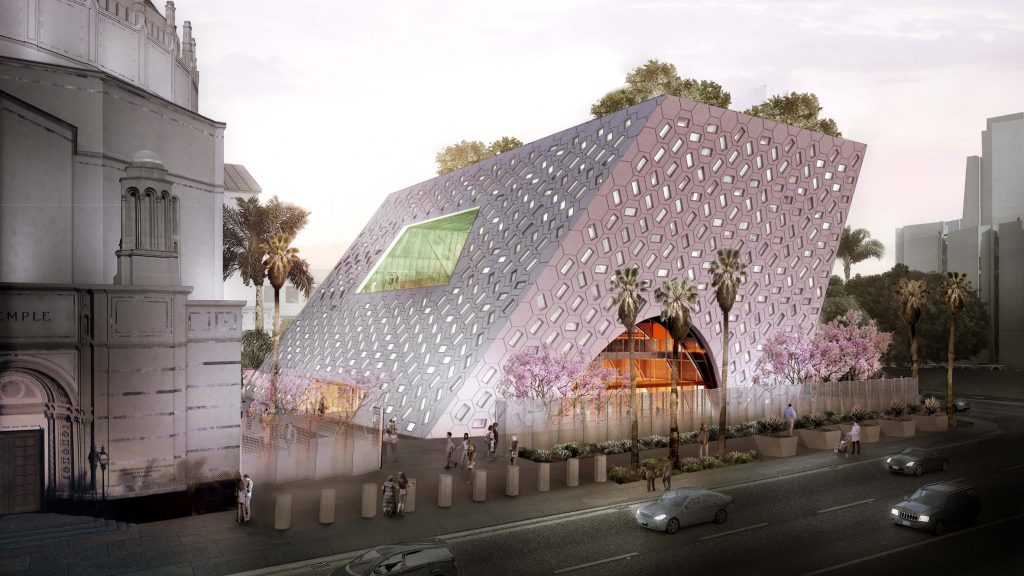
Audrey Irmas Pavilion by OMA
To adorn the exterior of a new addition into the Wilshire Boulevard Temple in Los Angeles, architecture firm OMA has used an aggregation of hexagonal panels derived from the geometries in the temple’s interiors. The temple is home to one of the largest Jewish congregations in the city and the new addition, named Audrey Irmas Pavilion, will serve as a multi-purpose event space for the surrounding community.
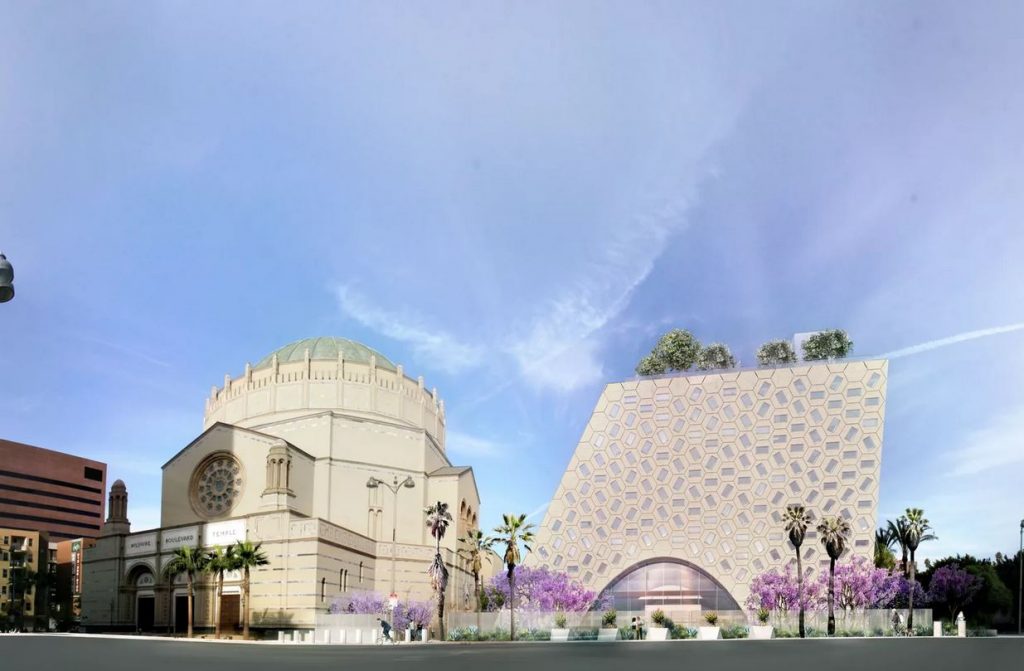
Audrey Irmas Pavilion by OMA
The building is a simple volume with its west façade sloping away from the existing temple, framing the courtyard between the two buildings. The resulting shape, carved by its relationship to its neighbors, is both enigmatic and familiar, creating a counterpoint to the temple that is at once respectful and forward looking.
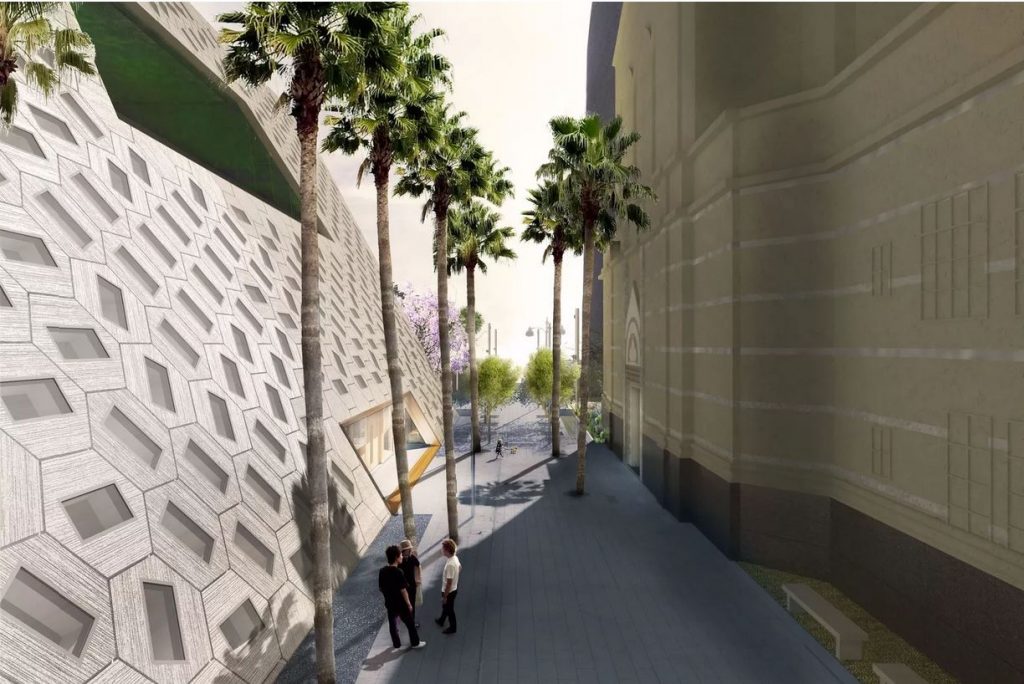
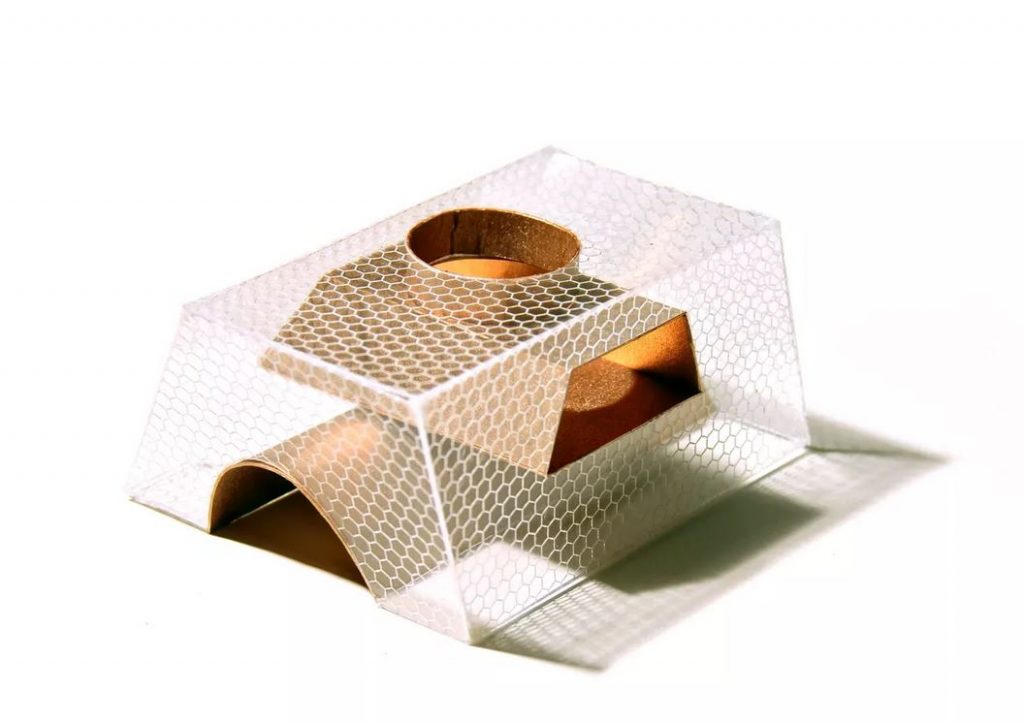
Audrey Irmas Pavilion by OMA
The pavilion is comprised of three distinct voids that puncture through the building. A main event space, a smaller multi-purpose room and a sunken garden are stacked one atop another creating a series of openings that bring light in and reorient visitors to the complex and beyond.
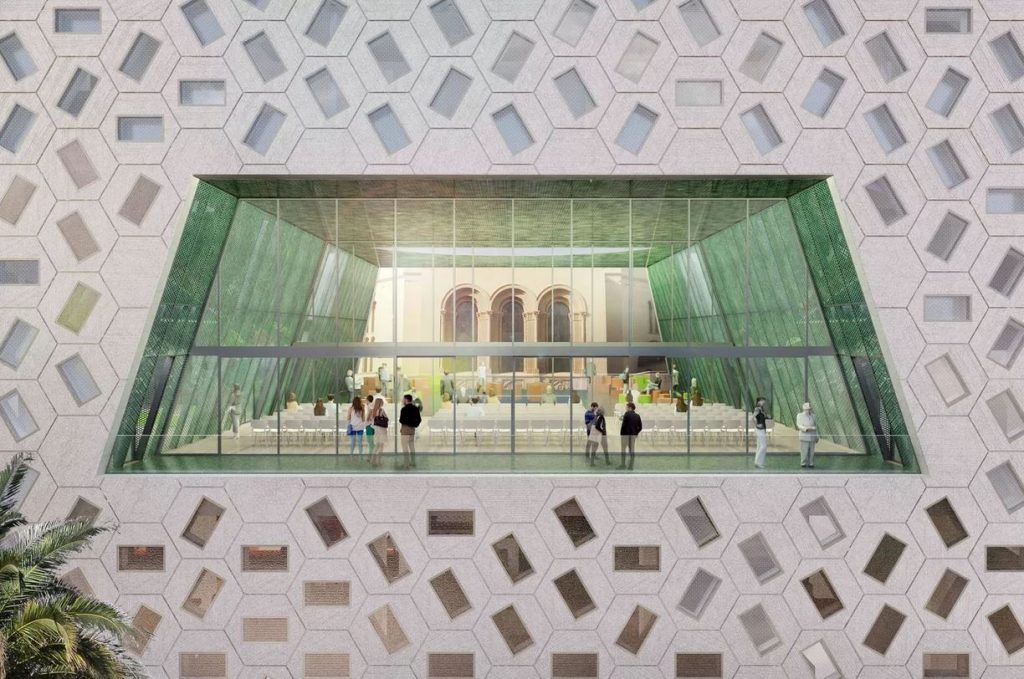

Audrey Irmas Pavilion by OMA
At the ground level, the expansive, column free main event space has the capacity to host diverse programs such as banquets, markets, conventions, performances and art events. By lowering the arc, its shape echoes the dome of the existing temple. A more intimate trapezoidal meeting space and outdoor terrace on the second floor act as an extension to the event space below.
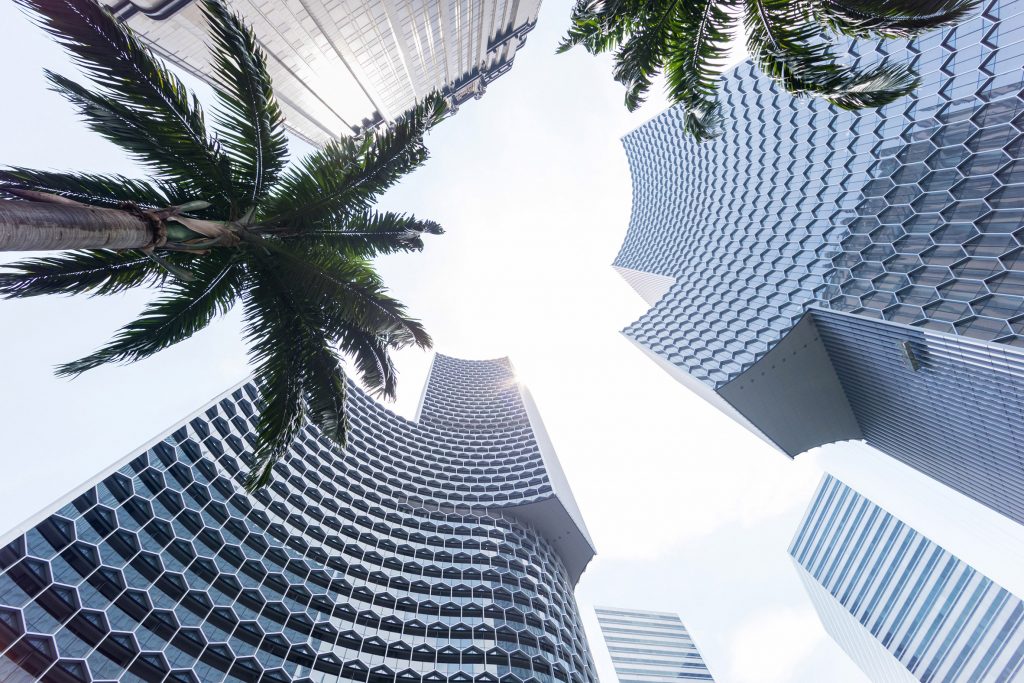
Duo by Büro Ole Scheeren Group (also header image)
Büro Ole Scheeren Group, an international architecture practice with offices in Hong Kong, Beijing, Bangkok, New York, London and Berlin, has designed two skyscrapers with concave, honeycomb-patterned facades for a Malaysian-Singaporean joint venture in the metropolis of Singapore. Named Duo, the two towers are not conceived as autonomous objects, but defined by the spaces they create around them.
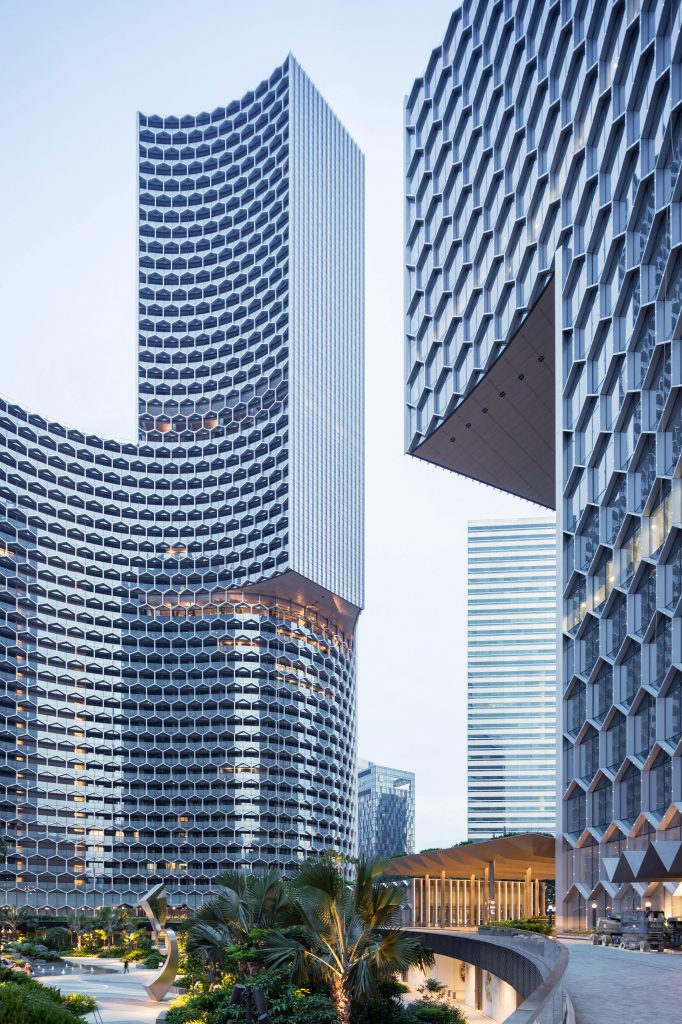

Duo by Büro Ole Scheeren Group
The taller tower is entirely residential, while the second building accommodates 39 floors of office space and the five-star Andaz hotel. Their shape is determined by the negative space in between the six adjacent circular and semi-circular plazas forming the basis of the buildings’ plans. Below the towers’ raised bases, there are extensive landscape areas covered in tropical greenery, while private terraces provide accessible green space on the tops of roofs and cantilevered elements.

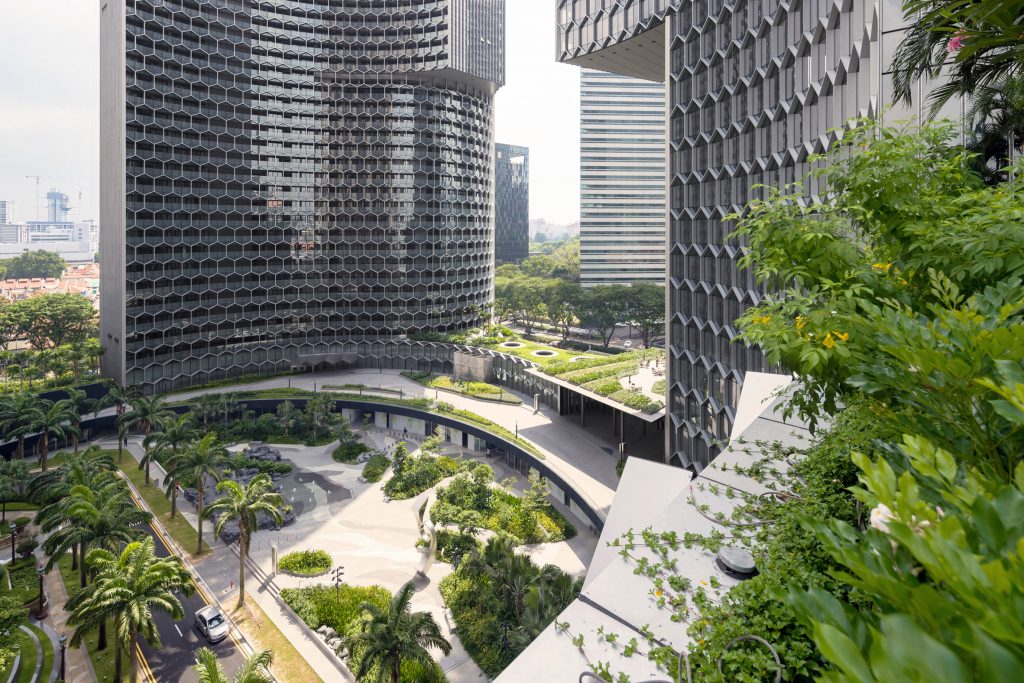
Duo by Büro Ole Scheeren Group
The honeycomb façade gives the towers a visual identity, accentuating their shapes, and simultaneously becomes an environmental tool. Its deep hexagonal frames are designed to shade the façade from the sun, while the towers’ concave façades should channel the wind to passively cool the public spaces below, fostering oasis-like microclimates within.
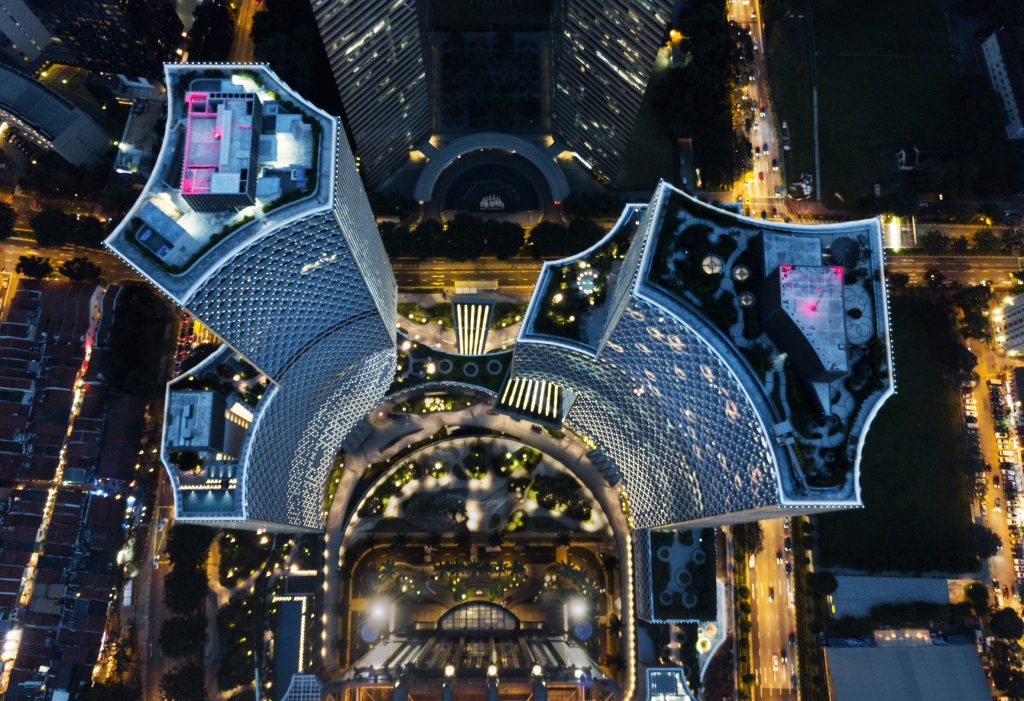
Duo by Büro Ole Scheeren Group
The Duo project features numerous shops and restaurants as well as leisure areas and connection to the adjacent underground MRT subway station, which enhances the bustling beehive-like impression.

Homed by Framlab
Framlab, an innovation studio with offices in Bergen and New York City founded by Norwegian designer Andreas Tjeldflaat, proposes to cover New York’s empty walls with honeycomb-like clusters of pods to house the city’s growing homeless population.
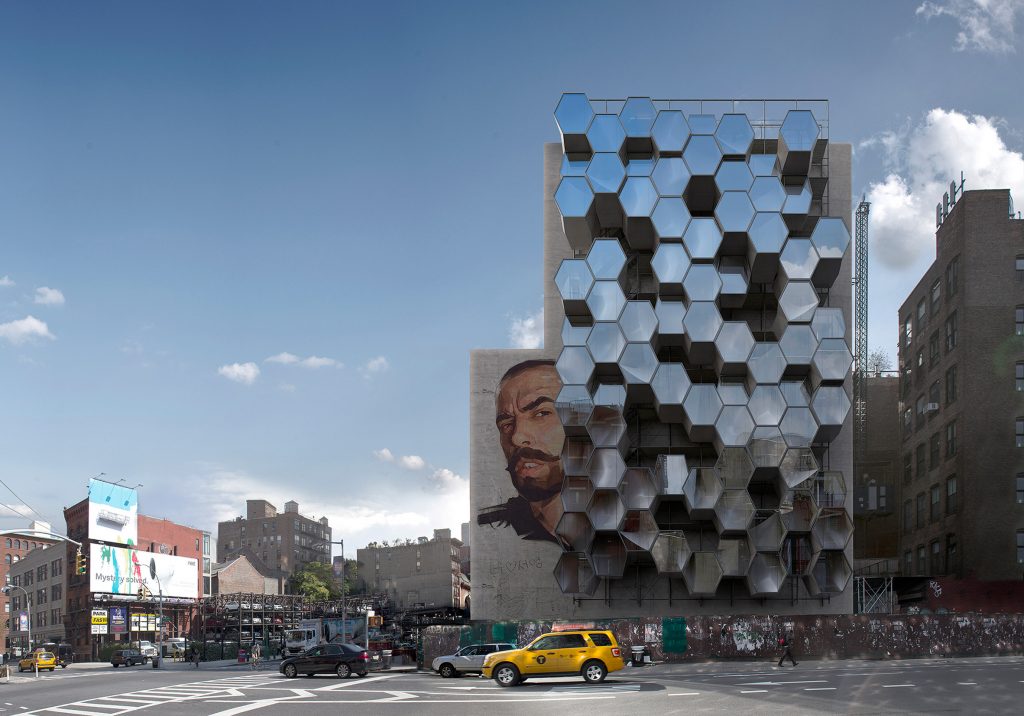
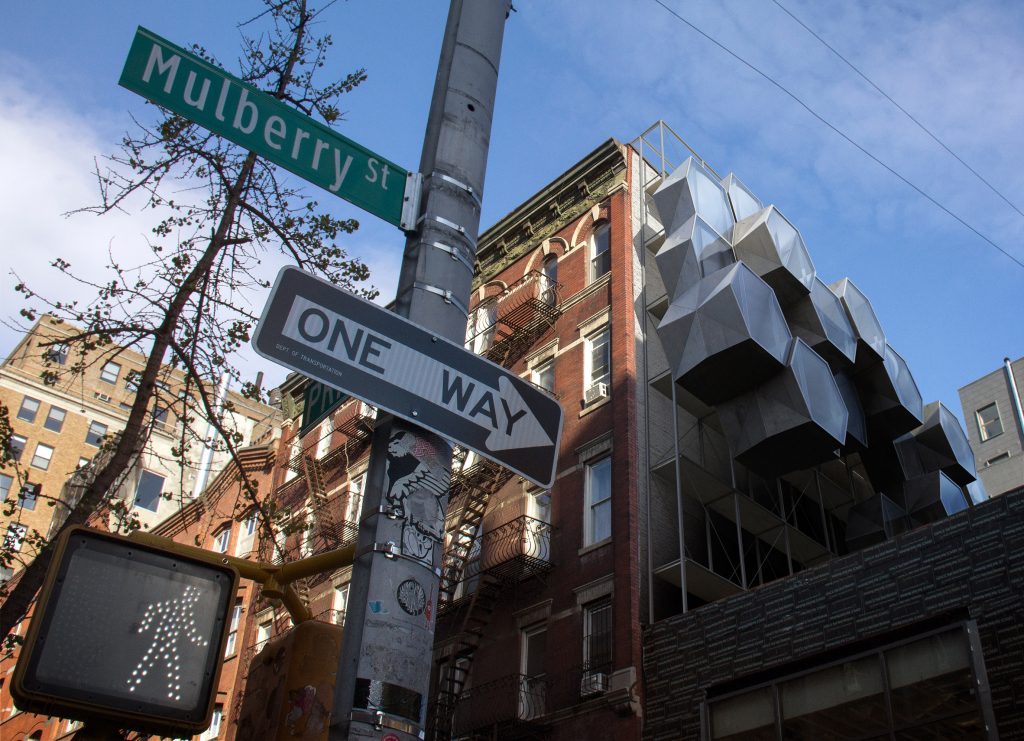
Homed by Framlab
In response to the problem of homelessness in NYC that has reached the highest levels since the Great Depression of the 1930s, the Homed project imagines the construction of scaffolding onto available ‘vertical lots’, i.e. windowless facades across the city, and slotting the hexagon-shaped modules inside to create temporary shelters.
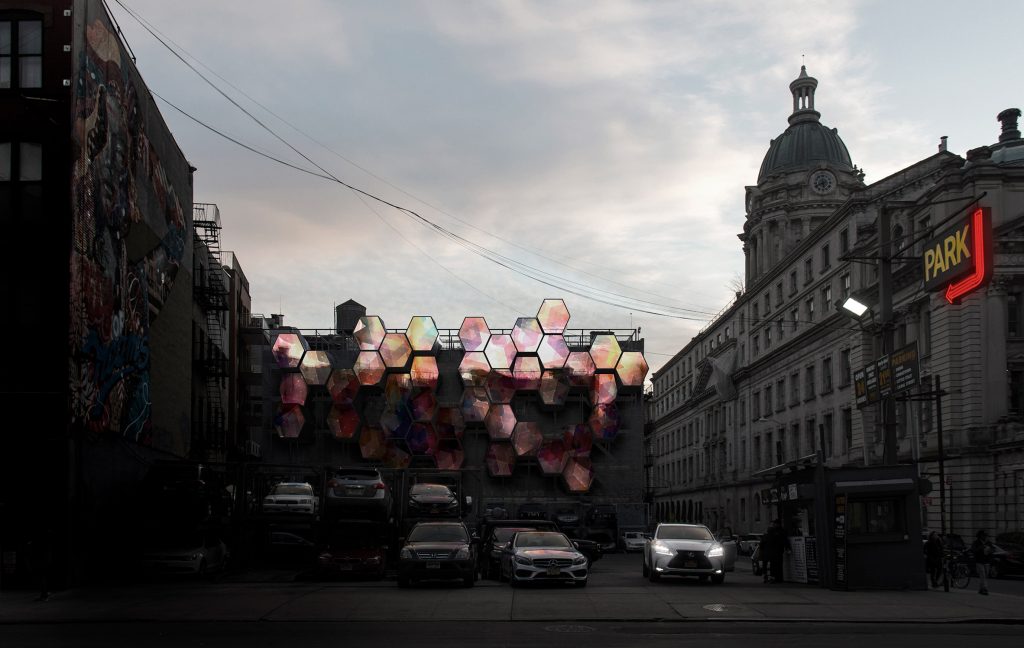

Homed by Framlab
The prefabricated units encompass outer shells made of oxidised aluminium cladding to withstand harsh weather, which would encase inner 3D-printed wall structures made from recycled polycarbonate. To create a warm and friendly environment, the interior will be finished with plywood. Smart-glass windows fitted in the front of the modules can alternatively be used to display artwork or advertisements to decorate the empty walls. To make the system adaptable, the team has opted for scaffolding frames that can be easily and quickly erected or disassembled. Fitted within are staircases that provide access to the pods.

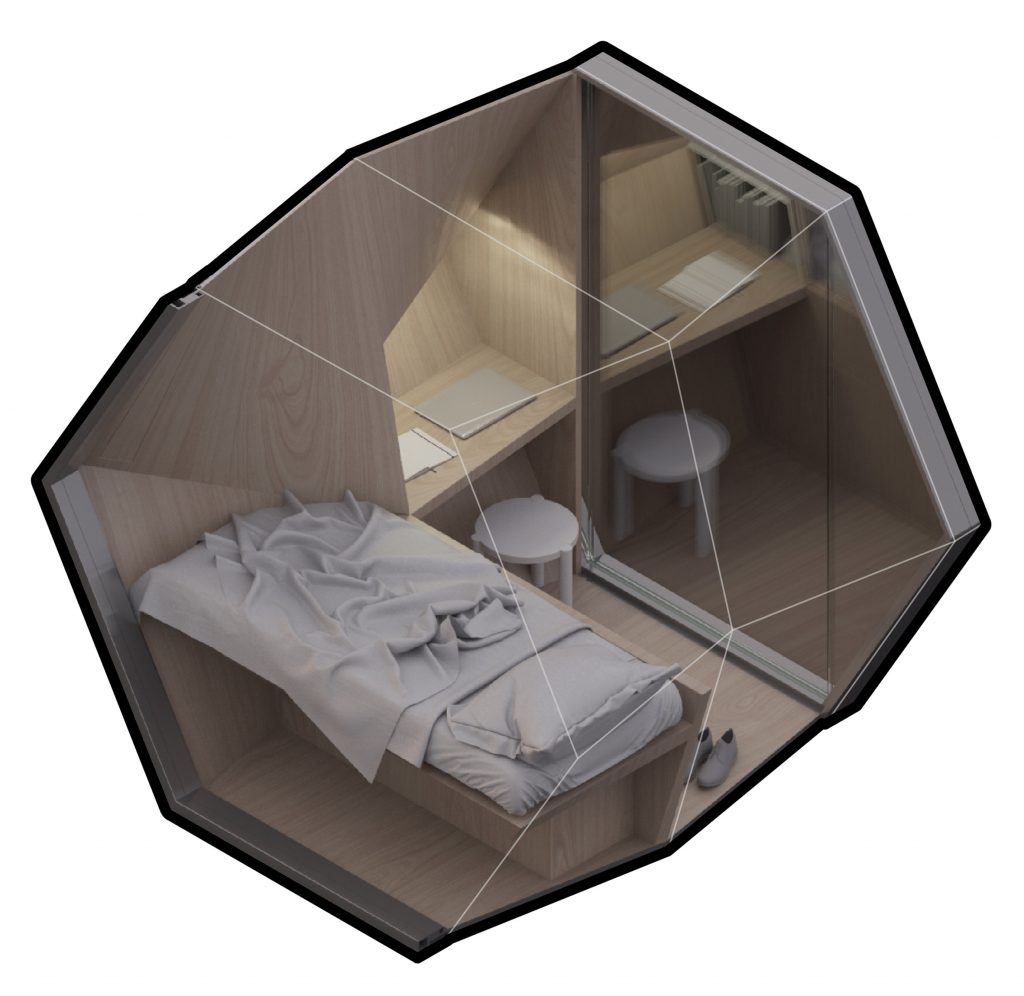
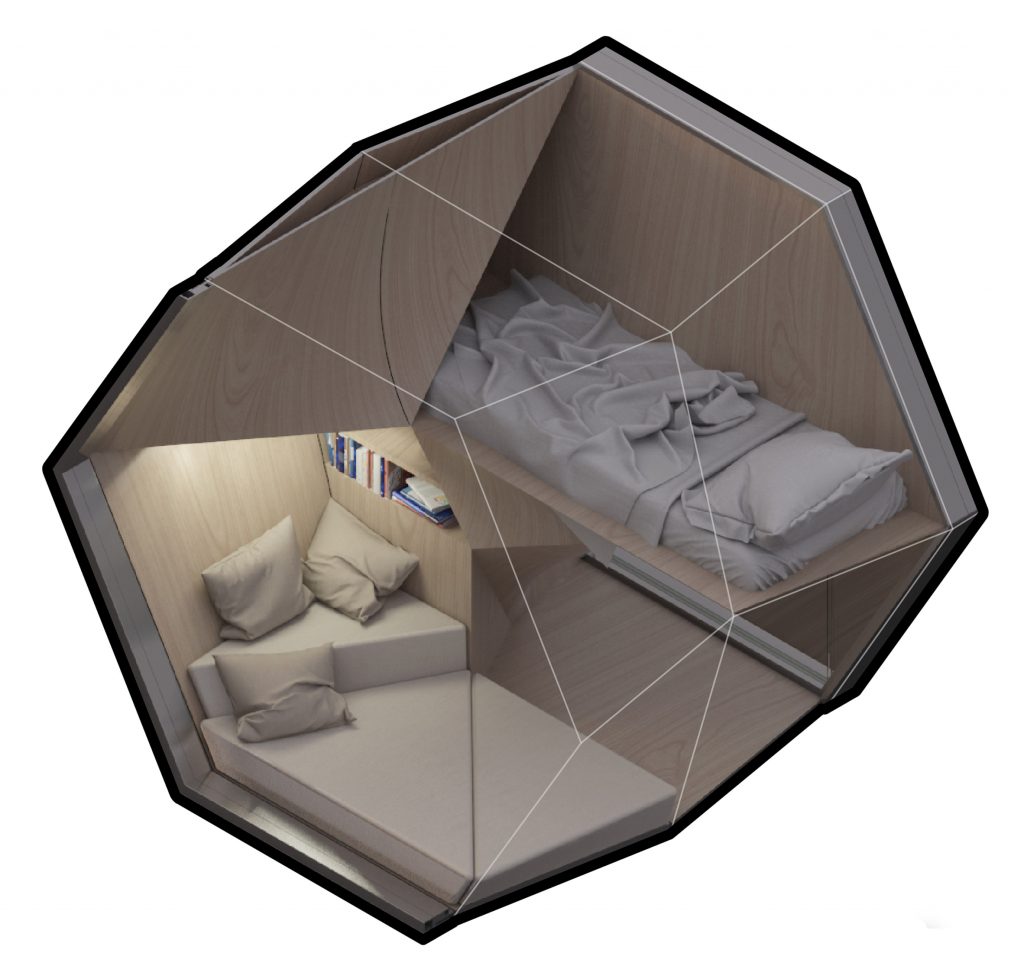
Homed by Framlab
Each unit is conceived to house one person, in order to maintain their privacy and safety, compared to conditions in the communal facilities. The occupants can customize the modules to their needs, as all fittings, including furniture, storage, lighting and appliances are integrated into the structure.